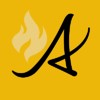
The wildfire danger level is VERY HIGH for the Fort McMurray area, LOW for the Fort Chipewyan area and MODERATE for the Fort Fitzgerald area within the Fort McMurray Forest Area.
To see where smoke is coming from, visit FireSmoke Canada.
On average, 67 per cent of wildfires are caused by humans. Everyone plays a role in preventing wildfires. Take the wildfire pledge to reduce wildfires and enter to win a helicopter tour!
MCX002 - Cattail Complex
Wildfires MWF047, MWF077, and MWF079 are part of the Cattail Lake Complex. All three wildfires were caused by lightning and are now classified as being held. The classification of being held means that given current weather conditions and resources, the wildfire is not anticipated to grow past expected boundaries.
Approximately 4 mm of rain fell on the incident command post overnight which will give crews more time to make good progress on containing and eventually controlling this wildfire complex. There has been no significant growth on any wildfires within this complex for several days.
This complex has 136 personnel, including firefighting crews from Alberta, Ontario, Australia, and now South Africa. Nine helicopters have been assigned to this complex and an incident management team oversees operations.
Crews continue to action hotspots identified by high level scans. Minimal hotspots have been identified across the perimeter of the wildfire, with most being on the interior or on the portions of the perimeter that are away from values. Very few have been identified in areas of concern and are being actioned by crews as they appear.
MWF047 is 105,868 ha in size and is located 53 km east of Fort McKay, 68 km northeast of Fort McMurray, and 6 km northeast of local industrial facilities.
See the most recent map of MWF047.
MWF077 is 17,548 ha in size and 38 km northeast of Fort McMurray, 46 km from Fort McKay, and 6.5 km from local industrial facilities.
MWF079 is 515 ha in size and is located near the Saskatchewan border. At this time, aircraft are monitoring this wildfire.
MCX003 - Algar Lake Complex
Wildfires MWF069, MWF086, and LWF165 make up the Algar Complex. All three of these wildfires are classified as being held. The classification of being held means that given current weather conditions and resources, the wildfire is not anticipated to grow past expected boundaries.
There are currently 144 personnel from Alberta, Australia, and South Africa assigned to the Algar Lake Complex, including 10 helicopters. This includes firefighters, heavy equipment operators, and an incident management team.
MWF069 started on July 10 as smaller lightning-caused fires merged into this more significant fire. It is located 10 km west of Highway 63 and 40 km southwest of Fort McMurray. It is 17,183 ha in size.
MWF086 is a lightning-caused fire that started on July 16. It is located 37 km southwest of Fort McMurray and is 2,251 ha in size. Fire crews are still actively monitoring conditions, and aircraft are in a position to undertake firefighting activities if required.
LWF165 started on July 17. It is located 20 km south of Crow Lake and is 1,166 ha in size.
Heavy machinery has also been busy creating both primary and secondary containment lines. These containment lines assist the ground crews in gaining access to the fire and provide a break in the vegetation to ensure less opportunity for fire growth. This work will continue over the next few days.
Demobilization of structure protection has begun in areas where wildfire managers are confident in the fireline holding.
Today, firefighters, heavy equipment, and supporting aircraft will continue this work and patrol for any hotspots that may be identified.
For up-to-date information about road conditions, visit 511Alberta.
MCX004 - Rabbit Lake Complex
Wildfires MWF060, MWF074, and MWF078 are classified as being held. The classification of being held means that given current weather conditions and resources, the wildfire is not anticipated to grow past expected boundaries.
MWF060 is located about 36 km northeast of Chipewyan Lake. It is estimated to be 20,219 ha in size. This wildfire was caused by lightning.
MWF074 is located northeast of MWF060. It is 297 ha in size and was caused by lightning.
MWF078 is located about 25 km east of Chipewyan Lake. It is 2,635 ha in size.
FORT MCMURRAY FOREST AREA WILDFIRE UPDATE
There are currently 20 active wildfires in the Fort McMurray Forest Area. Currently, 17 are being held, and three are under control.
Since January 1, 2024, 92 wildfires have burned approximately 215,216 hectares (ha) in the Fort McMurray Forest Area.
MWF043 was discovered on July 3 and is approximately 22 km northwest of Bitumount. It is classified as being held and is estimated to be 900 ha. This wildfire was caused by lightning.
MWF045 was discovered on July 2 and is approximately 23 km south of the Wood Buffalo National Park border. It is classified as being held and is estimated to be 2,300 ha in size. This wildfire was caused by lightning.
MWF056 was discovered on July 3 and is located approximately 41 km north of the Cattail Complex (MCX002). It is classified as being held and is estimated to be 400 ha in size. This wildfire was caused by lightning.
MWF061 was discovered on July 7. It is approximately 110 km northeast of Fort Mc Kay and 13 km from the Birch Mountain Wildland Provincial Park. It is classified as being held and is estimated to be 40 ha in size. This wildfire was caused by lightning.
MWF063 was discovered on July 9 and is 60 km southwest of Camsell Portage (Saskatchewan) and 65 km northeast of Fort Chipewyan. It is classified as being held at 11,476 ha in size. This wildfire was caused by lightning.
MWF064 was discovered on July 9 and is located on Bustard Island, approximately 2 km northwest of the Bushland Island remote forest recreational reserve. The island is 23 km northeast of Fort Chipewyan. It is classified as being held and is estimated to be 3.9 ha in size. The cause of this wildfire is under investigation.
MWF068 was discovered on July 10 and is located approximately 4.5 km east of the High Level Forest Area border and 13 km north of the Slave Lake Forest Area border. It is classified as being held and is estimated to be 100 ha in size. This wildfire was caused by lightning.
MWF080 was discovered on July 14 and is located in the area between Gipsy Lake, Garson Lake and the Alberta/Saskatchewan border. It is classified as being held and is estimated to be 3,570 ha in size. This wildfire was caused by lightning.
MWF081 was discovered on July 16. It is located on Burntwood Island, 39 km northeast of Fort Chipewyan. It is classified as being held and is estimated to be 779 ha in size. This wildfire was caused by lightning.
MWF091 was discovered on July 25. It is located 10 km southwest of Fort McMurray and 27 km west of Gregorie Lake Estates. It is classified as under control and estimated to be 2 ha. 12 firefighters, supported by two helicopters, are working on this wildfire. This wildfire was caused by lightning.

See the latest fire danger maps.

You can get a free fire permit online.
You will need:
- either an Alberta.ca Account or Alberta.ca Account for Organizations
- a description of the burn material(s)
- the location(s) of the burning activity
- any applicable photos or attachments
If you need help, see the Online Fire Permit System User Guide.
You can also request a fire permit by contacting your local forest area office.
.png?width=1201&height=629&name=WF_Social-images%20(8).png)
When you're done with your campfire, always remember to soak it, stir it and soak it again.
- Let the fire burn down before you plan on putting it out. Spread the embers within the fire pit, then add water or loose dirt, and stir.
- Expose any material still burning. Add more water and stir again until you can no longer see smoke or steam. Do not bury your fire as the embers may continue to smoulder and can re-emerge as a wildfire.
- Repeat until your campfire is cool to the touch.
- If your fire is out, you should not be able to feel any heat from the ashes.

OHV SAFETY
Always be cautious when recreating outdoors.
Off-highway vehicles (OHVs) have exhaust systems that get hotter than 200°C. At these temperatures, built-up materials (such as grass, muskeg, moss, or other debris) can heat up, smoulder and ignite.
These can fall to the ground as you are riding, starting a wildfire.
See OHV safety tips.
CONTACT:

RELATED INFORMATION
- Alberta Wildfire
- Alberta Fire Bans
- FireSmart in Alberta
- Alberta Emergency Alerts
- Air Quality Health Index
- Wildfire Smoke and Your Health
- 511 Road Reports
- Emergency Preparation
Join the conversation on
DOWNLOAD OUR APPS
Alberta Wildfire App for Apple or Android and Alberta Fire Bans App for Apple or Android.
